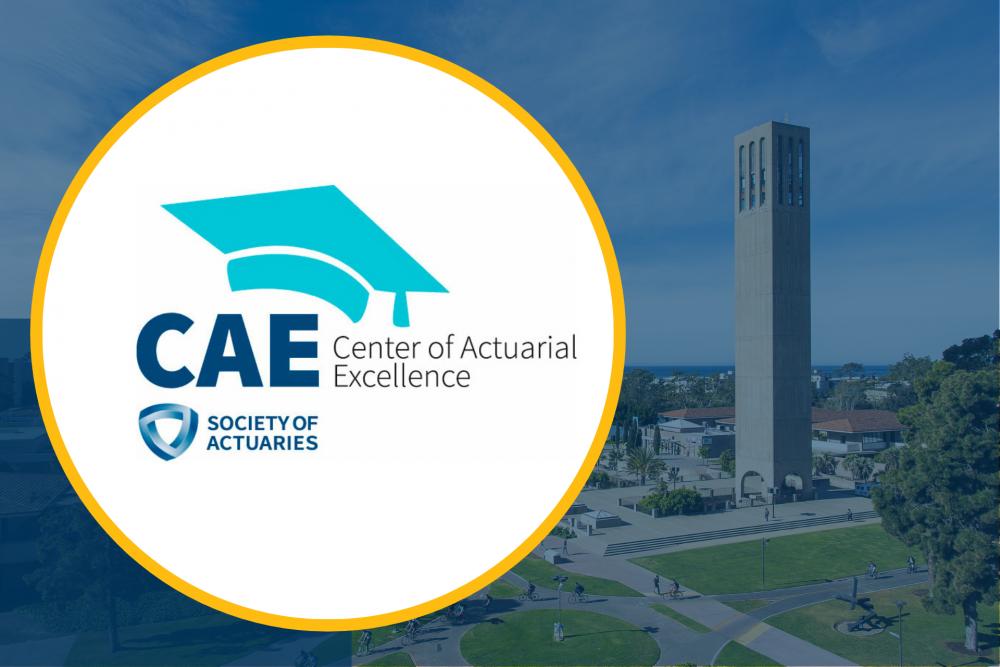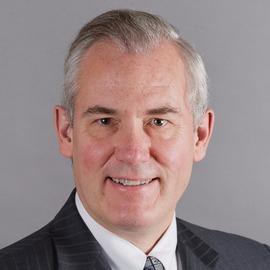
Making the Grade


Actuaries are a meticulous bunch, so it’s no small honor that the Society of Actuaries has recognized UC Santa Barbara as a Center of Actuarial Excellence (CAE). The distinction is the culmination of an extensive vetting process and confers benefits and esteem to the program, its students and alumni.
As of December 2021, the United States boasted 228 official actuarial science programs, only 19 of which were recognized as centers of excellence. UCSB has the largest program in California, and will be the only one in the state to earn this title.
“This distinction affirms the value of the program and the impact that our alumni are having after they graduate, because they play a vital interactive role in earning CAE status,” said program director Hal Pedersen. “It positions us as a leader in actuarial education.”
“I am so proud that UC Santa Barbara has officially been named a Center of Actuarial Excellence,” said Pierre Wiltzius, executive dean of the College of Letters and Science and Susan and Bruce Worster Dean of Science. “This designation reflects the quality of our actuarial science program and the high caliber of all of the associated faculty. I couldn’t be more pleased to congratulate everyone involved in this tremendous effort.”
Established in 2010, the university’s undergraduate actuarial science program has been expanding ever since. The Department of Statistics and Applied Probability offers a four-year bachelor’s of science degree as well as a five-year combined B.S./M.S. degree. The program has enjoyed consistent support and commitment from the university, and Wiltzius himself went to bat for it when the Society of Actuaries came for their on-site audit.
The program teaches students more than merely how to solve math problems. Both trajectories combine coursework with projects, where students work directly with industry sponsors and contacts on a regular basis The faculty includes certified actuaries actively engaged in the profession who bring their experience to bear in their coursework, updating their syllabi on a yearly basis to keep in tune with industry trends. This dynamic interplay between education and current professional topics factors into the society’s decision process.
“Earning the recognition as a Center of Actuarial Excellence is an honor and we worked diligently to show that we’re on the leading edge of the actuarial profession, producing competitive applicants and leaders in the field,” said Anna Theogarajan, academic coordinator for the PSTAT department. The process involves drafting an application, technical review, fielding interviews and questions, and on-site visits from officials. The university must have a dedicated major and comprehensive course offering that covers the vast majority of required actuarial knowledge. The program must be of sufficient size and produce “high quality graduates that are in demand by employers.” The list goes on.
Theogarajan reported that the CAE review committee was particularly impressed by UCSB’s students and the student actuarial association. “The Actuarial Association has a legacy of producing impactful leaders who continue giving back after graduating from UCSB,” she said. “It also has a robust program including guest speakers, exam and career preparation, and hosts the Annual Actuarial Career Fair.” While the association operates independently from the PSTAT department, it works in conjunction with faculty and staff, making for a stronger, more well-rounded program.
Becoming a Center of Actuarial Excellence confers some funding benefits. For instance, in addition to the financial help the department offers students, the SOA will provide three students per year with reimbursements for actuarial exam fees. But perhaps the greatest benefit is the recognition itself. UC Santa Barbara students have this distinguished program on their CVs when they enter the workforce, which makes them more competitive applicants for internships and jobs.
“Achieving Center of Actuarial Excellence status is a major milestone for the UCSB actuarial community, reflecting the dedication and productivity of our students, alumni and advisory board,” Pedersen said. “Furthermore, it provides a strong impetus for the ongoing evolution of our program as we look for more efficient and innovative ways to serve the actuarial community of California.”



